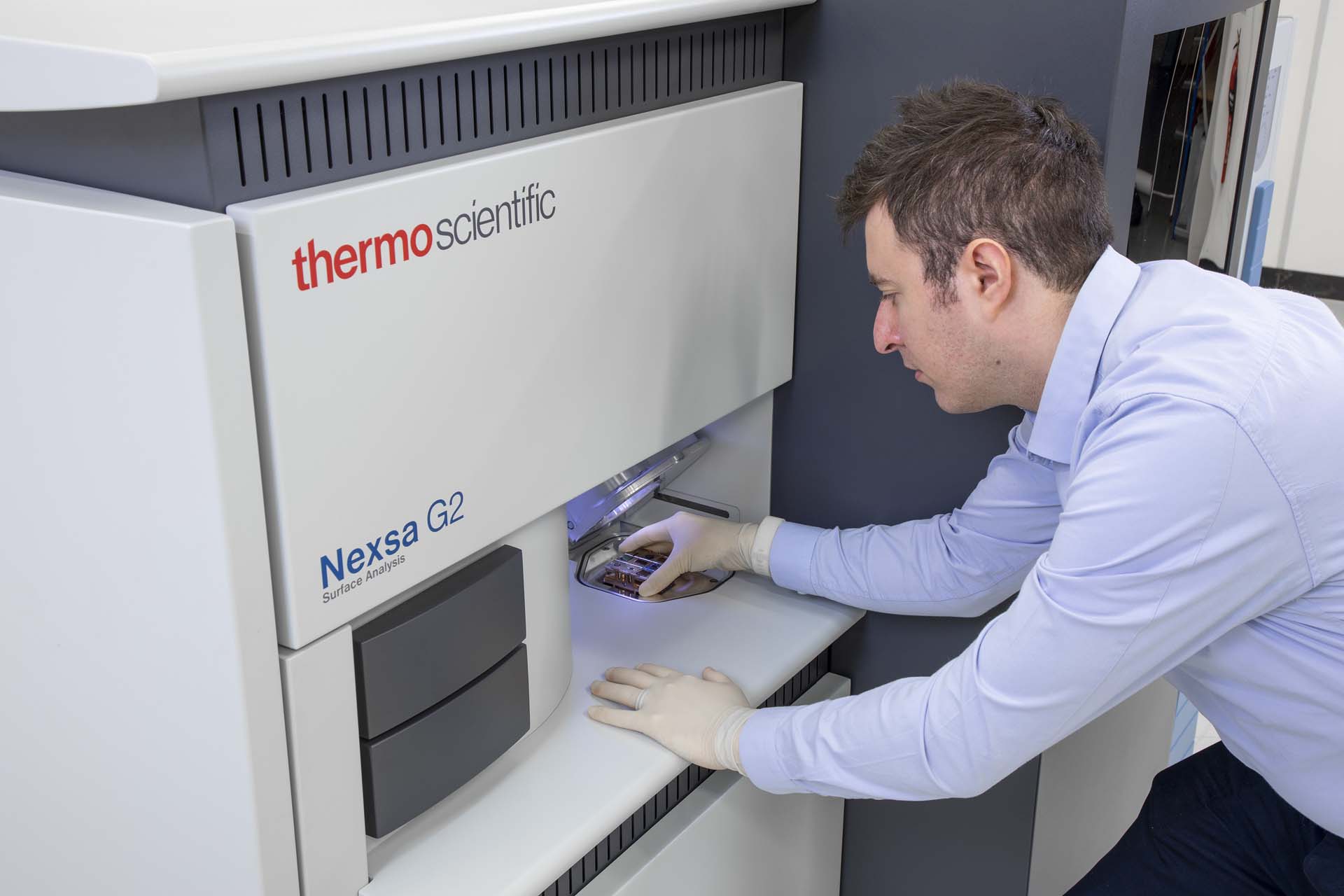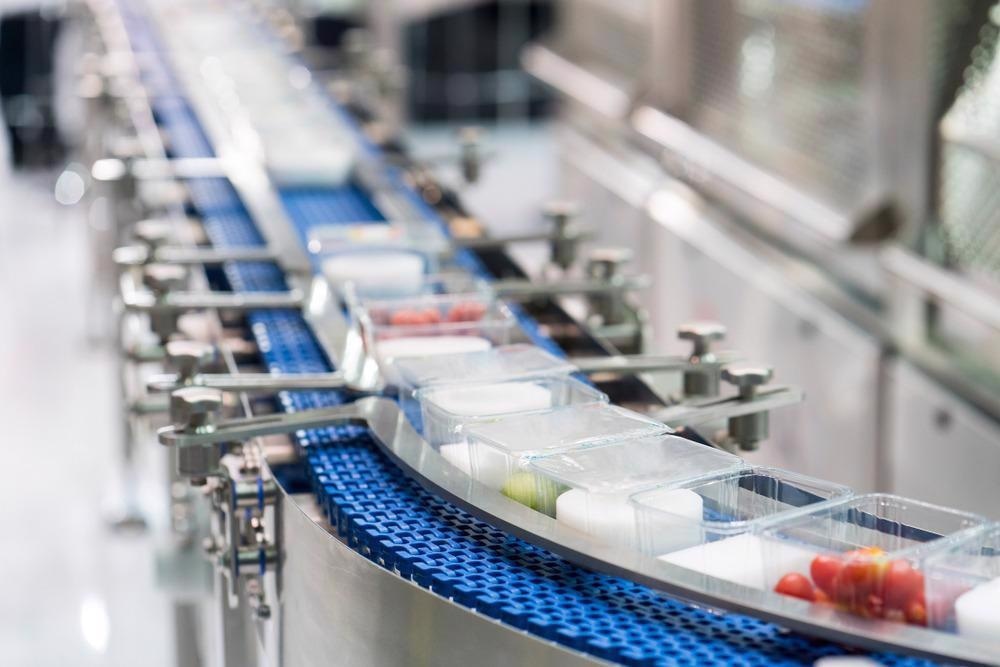In this interview, AZoM talks to Thermo Fisher Scientific’s Dr. Tim Nunney and Dr. Adam Bushell, Applications Development & Marketing Manager and Product Marketing Manager for the Surface Analysis product line respectively, about the new Nexsa G2 Surface Analysis System and why it is a stand-out instrument for improving the analysis of surfaces.
What makes the Thermo Scientific™ Nexsa™ G2 X-Ray Photoelectron Spectrometer (XPS) System different? How does it stand out from prior systems?
Tim: The Nexsa G2 is the next step in the journey that we have been making since we introduced the K-Alpha instrument in 2006. We have been producing surface analysis instruments for over 50 years, and that experience led us to the realization of what was most important in an XPS instrument: confidence in the analysis, performance that made experiments fast and easy to complete, and simple instrument operation without compromising on capabilities.
With the original Nexsa system, we took those ideas, and applied them to a multi-technique instrument, so that XPS could be complemented with other analysis methods such as UPS, ISS or REELS. Uniquely, the instrument could also be configured with a Raman spectrometer, for co-incident surface analysis and molecular spectroscopy.
Nexsa G2 further improves the XPS performance of the system, but also adds new capabilities for sample heating and applying voltages to samples in-situ. The system also includes the latest version of our surface analysis software, Avantage v6.
Adam: Nexsa brings the ability to collect and analyze many surface analysis techniques within a single experiment, not just XPS. While our customers may have been collecting this complementary data in the past, allowing them to do it from the same point on the sample and in an automated fashion drastically decreases the time needed to reach a more comprehensive picture of their sample.
On top of that, we have added the ability to load analysis points to and from the MAPS software package, so you can collate XPS analysis with microscopy information more easily.
Could you talk about some of the updated key features of the Nexsa G2 Surface Analysis System?
Adam: The Nexsa G2 system delivers a large sensitivity improvement in XPS performance, particularly for smaller analysis areas. This enhancement facilitates even faster data collection, makes accessing higher spectral resolution easier, and permits better detection of trace elements.
There are also some new special sample holders available, making it possible for users to heat or electrically modify their samples and immediately see the effect that has on the surface chemistry.
Specifically, what features does Nexsa G2 help improve in the analysis process?
Adam: The patented top-down view of the sample in the analysis position really helps find the right spot on your sample quickly, then you can stack up all the different analytical techniques into one experiment for that point.
The bit I find really useful is just being able to drag data across from the experiment tree into a processing window so that I can monitor experiment progress and start using the powerful processing tools in parallel.

Loading samples into the Nexsa G2 Surface Analysis System.
Can you go into more detail about the high-performance X-ray source and how this new low power X-ray monochromator improves data collection?
Adam: We have made some key adjustments to the region where the x-rays are generated which gives a large improvement in the x-ray intensity. We use a focussed x-ray beam, so the size of the illuminated region on the sample is directly linked to where we generate the x-rays on the anode. As the user selects the size they need to analyze on their sample by using the optical marker provided, we decrease the power down to only that needed for illuminating that area, reducing the energy waste.
Tim: There are various ways of getting good sensitivity for XPS data collection – using lots of power in the X-ray source, ensuring effective monochromation of the X-rays, and having efficient electron collection by the lens, analyzer & detector. Our philosophy is to keep the X-ray power low, as the X-rays can affect the sample, and concentrate on making the monochromator and lens system as good as possible.
This means precision engineering on the quartz monochromator crystal and on the components for the electron optics plus high-speed detector electronics. It is these innovations elsewhere on the system that enable us to achieve high count rates with low X-ray power.
What is depth profiling and how does Nexsa incorporate this process in its performance?
Tim: Depth profiling is the method that is used to analyze beyond the surface of the material and probe the chemical changes at interfaces or in sub-surface regions. To do this, analysis is interleaved with cycles of ion beam etching, so that material can be removed from the sample and layer by layer build up a profile of the chemistry.
Nexsa is configured with one of two ion sources, either a monatomic ion source or MAGCIS, the monatomic and gas cluster ion source. Both sources are aligned and optimized automatically by the software, ensuring reproducible etch rates, which are crucial when running a series of experiments on a set of samples.
Nexsa G2 improves sample viewing through its patented optical viewing system and XPS SnapMap. Why is this important?
Tim: You need confidence that you are analyzing what you think you are analyzing, whether that is for a publication, or to show your boss! By having our unique optical system, where the operator has exactly the same view as the electron optics as well as a more traditional angled view, it is very easy to align exactly onto a feature.
The system also has two light sources to ensure that low or high relief samples can be easily viewed. For samples that have features that cannot be seen optically we have XPS SnapMap, a rapid XPS imaging mode that can be used to choose analysis positions, or for analytical chemical state imaging of the surface.
Adam: With analytical techniques that are not visual-based, it is always important to know exactly where your information is coming from in your sample, otherwise you might draw the wrong conclusions on what is causing the effect you are seeing. Quite often we look for minor changes between “good” and “bad” areas, so we need to know exactly which bit we are looking at.
Most defects or features can be seen with our patented optics, but when we cannot identify something optically then using the Snapmap function helps us identify it chemically. From the Snapmap we can add analysis points easily to ensure we are hitting the right spot.
What is the maximum sample area and thickness Nexsa G2 can process?
Tim: Nexsa can accommodate samples up to 60 x 60 mm in area, and up to 20 mm thick. This can be one big sample or lots of smaller ones. With careful mounting, several days' worth of work can be set up on a sample holder.
Digital control is very useful for instrument control, data processing and reporting. Could you walk us through how Nexsa’s digital control incorporates these features and streamlines efficiency and user control?
Adam: Our Avantage software provides instrument control, data collection and data processing all in one package, which allows easy construction of experiments to match the data output required and to combine the different analytical techniques by simply adding that technique into the tree.
For data collection, we have included the most commonly needed items e.g. charge compensation as checkboxes or settings within the experiment objects, and defaults are provided for guidance, and analysis points can be added by clicking on the optical display.
For data analysis, arguably the more complex side of completing analysis, we have a suite of data reduction tools such as principle component analysis which can be used to pick out signals in a multi-level data set, as well as our XPS knowledge view which can be opened either separately or from a data region of interest.
The Nexsa G2 System integrates multiple analytical techniques like ISS, UPS, REELS and Raman. What is the benefit of having all these featured combined on one system?
Tim: It pains me to say it, but sometimes you cannot get all the information you need from just doing XPS.
By having access to additional analytical techniques on the instrument, the amount of information you can obtain increases, which can result in a better understanding of the molecular structure in the case of Raman, the electronic structure using REELS and UPS, or the elemental composition at the outer atomic layer of the surface with ISS.
The techniques are complementary and enable the analyst to build up a more complete picture of the material under investigation.
Adam: The other key benefit is not having to repeatedly find the same point on a sample to measure in different instruments, a time-wasting task which can be very tricky on some samples and is best avoided.
We also gain the ability to use all the analytical techniques while removing material, so for example during a depth profile we can instantly compare the top surface elemental coverage to the XPS data at each point in the profile, something that would take hours or even days if transferring between systems to do each measurement, with the risk the sample surface would change between the two.

Polymer-based food packaging. Image Credit: Aumm graphixphoto/Shutterstock.com
Describe how the Nexsa G2 Surface Analysis system can be used for multiple fields of research (eg. battery, metals, polymers, fibers and geological research).
Tim: The interactions of surfaces and interfaces, either with the environment that they are in or in the case of interfaces with the next material adjacent to them, define the performance and suitability for purpose.
For batteries, this could be determining how the surface chemistry of the electrodes changes as they are charged and discharged; for polymers, this may be the layer structure of OLEDs or the polymer gradients that make up films for food packaging.
Everywhere you look there are questions that need an understanding of surface chemistry to answer and the Nexsa G2 is designed with a workflow that easily fits into this process.
By talking to researchers around the world, we understood that making the system easy to operate, without compromising on its flexibility or performance would mean that scientists can concentrate on understanding the data, rather than spending time tailoring the system to achieve a specific result.
If you could describe Nexsa and its value in a few adjectives, what would they be?
Tim: Flexible, intuitive, powerful and fast!
Adam: Advanced, reliable, precise, and user-friendly.

 Learn more about the Nexsa G2 Surface Analysis System at the Thermo Fisher Scientific website
Learn more about the Nexsa G2 Surface Analysis System at the Thermo Fisher Scientific website
About Dr. Tim Nunney
Dr. Tim Nunney is Applications Development & Marketing Manager for the Thermo Scientific Surface Analysis (X-ray photoelectron spectroscopy) product line. His role involves all aspects of product marketing, including managing the applications team, customer evaluations, product development and commercial support.
He has been with Thermo Fisher Scientific since 2004, previously holding positions as an applications scientist, and in the operations group. Prior to joining Thermo Fisher Scientific, Tim worked as a post-doctoral research fellow at the University of Southampton, investigating the dynamics of molecular dissociation on metal surfaces. He completed a Ph.D. in Surface Science at the University of Liverpool, an MSc in Surface Science & Catalysis at the University of Liverpool, and a BSc (Hons) in Chemistry from the University of Nottingham.

About Dr. Adam Bushell
Dr. Adam Bushell is the Product Marketing Manager for the Surface Analysis Products at Thermo Fisher Scientific, connecting customer needs with new and existing technology to define new product developments for the marketplace. He has held a variety of roles in both Marketing and Research and Development departments since joining the company in 2004. Adam gained his Master of Physics and Surface Science Ph.D. qualifications at Aberystwyth University in Wales, UK.

Disclaimer: The views expressed here are those of the interviewee and do not necessarily represent the views of AZoM.com Limited (T/A) AZoNetwork, the owner and operator of this website. This disclaimer forms part of the Terms and Conditions of use of this website.